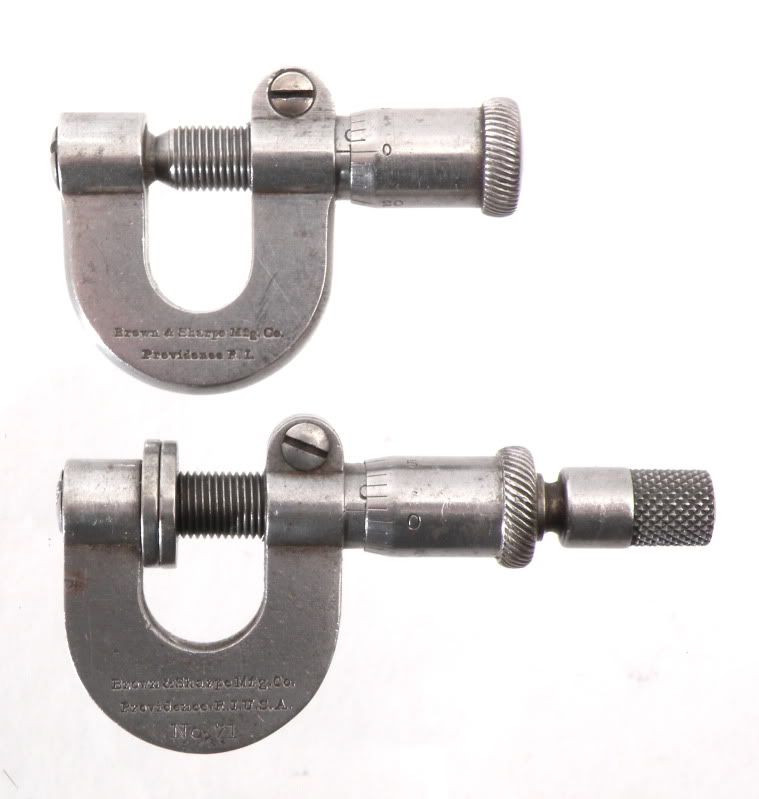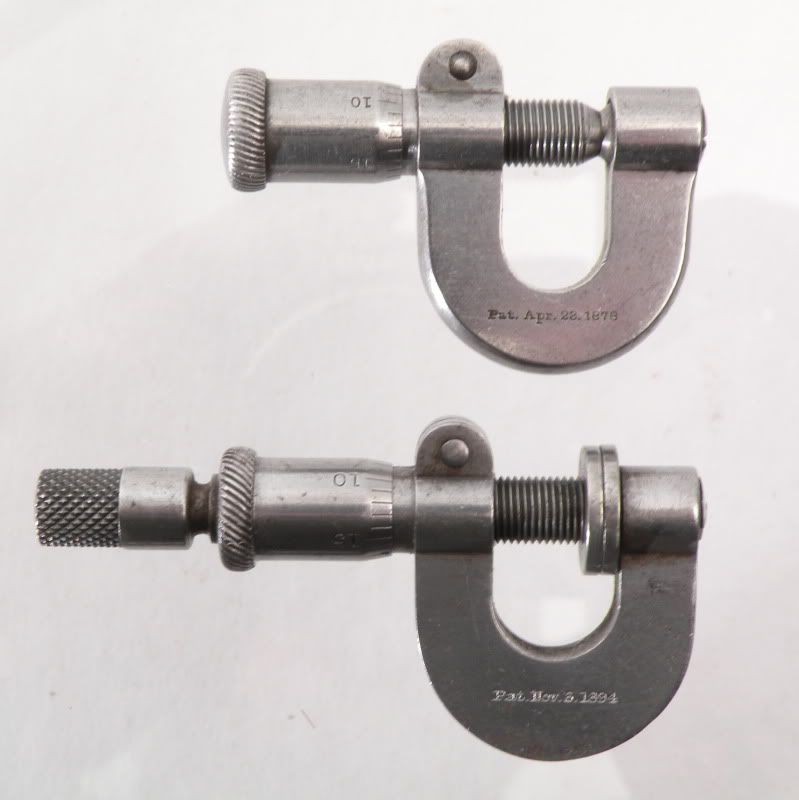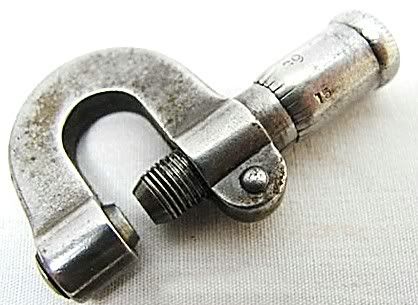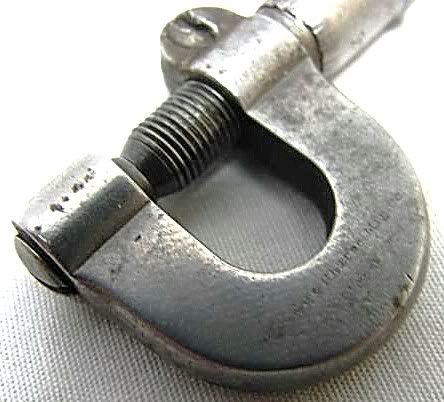AntiqueMac
Hot Rolled
- Joined
- Jun 17, 2003
- Location
- Florida Mountains!
This thread was planned earlier by Rivett608 and myself as a follow-on to continue the discussion here about the development of micrometers that we use today.
First, please be sure to read the thread on the Palmer micrometer - the first universal micrometer - Here:
http://www.practicalmachinist.com/v...torically-important-micrometer-palmer-220198/
The "second" mass produced micrometer is apparently the Brown & Sharpe "Pocket Sheet Metal Gauge":
After returning from an 1867 Paris Exposition and seeing an example of the apparently mass produced Systeme Palmer micrometer patented Sept. 7, 1848 (almost 20 years before 1867), J. R Brown & Lucien Sharpe went to work to create a new version.
First seen (to my knowledge, so far anyway) in the December 30, 1868 issue of American Artisan, Brown & Sharpe is said to combined the "Systeme Palmer" concepts with concepts from the a measuring tool from a Bridgeport brass company (Wilmont's micrometer made by Laws). It looks like a smaller, improved design of the Palmer to me. I'm unclear what was taken from the funky, spiral measuring lines of the Wilmont/Laws mic. I might have been the design of the frame and the use of knurling on the spindle???
Indeed, it took B&S another 10 years (1877) produce a 1 inch micrometer version - which Palmer had and likely had larger ones too!
But, no matter. The B&S "Pocket Sheet Metal Gauge" was manufactured under the mass producing capabilities of that company and sold cheap enough that it was very successful.
Here are some pictures of the result:
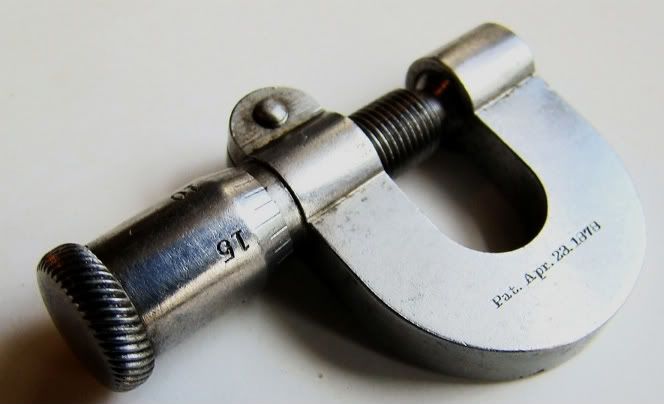
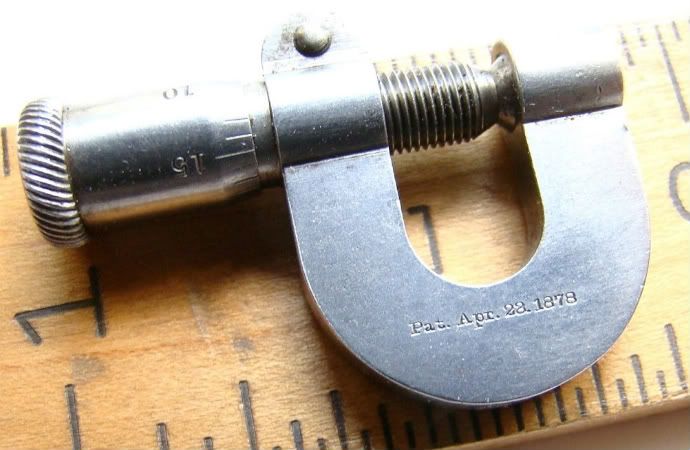
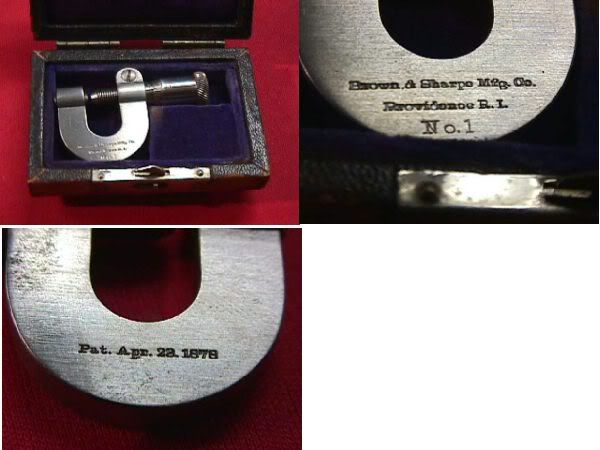
And, here are more modern examples above an early version:
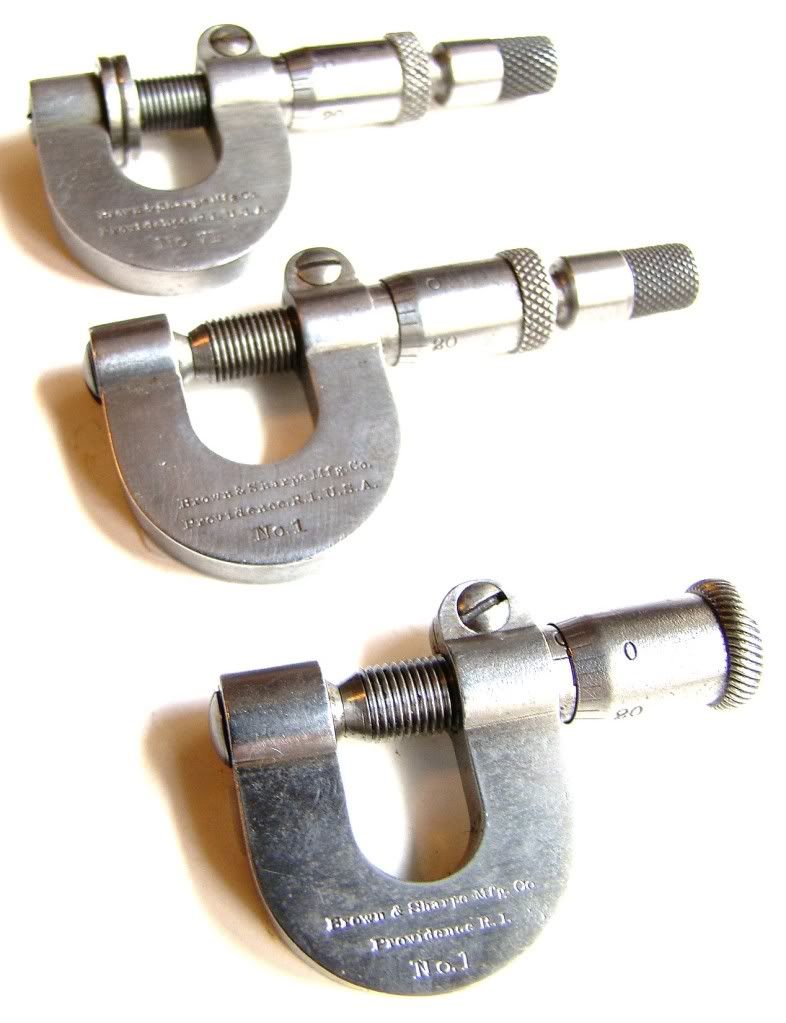
Note the early versions shape and knurling designs. And note that later versions developed into paper as well as other micrometers.
It is interesting to think about the possibility that the Palmer micrometer might have come to be because of the need of the music wire industry, while the B & S Pocket Sheet Metal Gauge was developed for the sheet metal industry. Was one developed to make the tone of the wire correct while the other to ensure accurately filled sales?
Note the April 22, 1878 patent is for the Victory SM Co micrometer patented by George Pratt and bought by Brown & Sharpe. To my knowledge the original 1868 "Pocket Sheet Metal Gauge" was never patented.

First, please be sure to read the thread on the Palmer micrometer - the first universal micrometer - Here:
http://www.practicalmachinist.com/v...torically-important-micrometer-palmer-220198/
The "second" mass produced micrometer is apparently the Brown & Sharpe "Pocket Sheet Metal Gauge":
After returning from an 1867 Paris Exposition and seeing an example of the apparently mass produced Systeme Palmer micrometer patented Sept. 7, 1848 (almost 20 years before 1867), J. R Brown & Lucien Sharpe went to work to create a new version.
First seen (to my knowledge, so far anyway) in the December 30, 1868 issue of American Artisan, Brown & Sharpe is said to combined the "Systeme Palmer" concepts with concepts from the a measuring tool from a Bridgeport brass company (Wilmont's micrometer made by Laws). It looks like a smaller, improved design of the Palmer to me. I'm unclear what was taken from the funky, spiral measuring lines of the Wilmont/Laws mic. I might have been the design of the frame and the use of knurling on the spindle???
Indeed, it took B&S another 10 years (1877) produce a 1 inch micrometer version - which Palmer had and likely had larger ones too!
But, no matter. The B&S "Pocket Sheet Metal Gauge" was manufactured under the mass producing capabilities of that company and sold cheap enough that it was very successful.
Here are some pictures of the result:



And, here are more modern examples above an early version:

Note the early versions shape and knurling designs. And note that later versions developed into paper as well as other micrometers.
It is interesting to think about the possibility that the Palmer micrometer might have come to be because of the need of the music wire industry, while the B & S Pocket Sheet Metal Gauge was developed for the sheet metal industry. Was one developed to make the tone of the wire correct while the other to ensure accurately filled sales?
Note the April 22, 1878 patent is for the Victory SM Co micrometer patented by George Pratt and bought by Brown & Sharpe. To my knowledge the original 1868 "Pocket Sheet Metal Gauge" was never patented.






